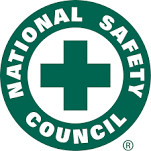Certificates of Insurance (COIs): The Most Overlooked Risk in Contractor Management
When a Missed COI Renewal Turns into a Million-Dollar Problem
It happens more often than you think. A contractor’s insurance quietly expires mid-project. An accident follows an injury, property damage, or environmental spill and suddenly your company is footing the bill.
For Safety Directors, Risk Managers, and Procurement Leaders, certificates of insurance (COIs) are often treated as a formality - a box to check during onboarding. But that oversight carries real financial and legal consequences. Each expired, incomplete, or unverified COI represents potential liability waiting to surface.
The truth is simple: in contractor management, unverified insurance is no insurance at all.
The Hidden Risks Behind Contractor COIs
Most companies assume that collecting COIs means they’re covered. Unfortunately, manual and inconsistent processes leave significant gaps. These gaps aren’t theoretical - they’re the leading cause of compliance breakdowns and post-incident disputes.
Common risks include:
- Expired or lapsed policies that go unnoticed until after an incident.
- Incorrect coverage limits that fail to meet contractual or OSHA insurance requirements.
- Missing additional insured endorsements that leave your company exposed.
- Unverified subcontractor coverage, creating layers of uninsured work on your jobsite.
When these gaps go unaddressed, even the best prequalification program can unravel under legal scrutiny. A single uninsured claim can translate into six-figure losses, project delays, or OSHA citations that damage your reputation.
Why Manual COI Tracking Fails
For many organizations, contractor insurance compliance is managed through spreadsheets, email chains, and file folders a system that simply can’t keep up with volume or renewal cycles.
Here’s what that looks like in practice:
- No automated alerts when policies expire or documents go missing.
- No verification that the coverage listed matches the actual policy on file.
- No centralized visibility across departments or sites.
It’s not just inefficient - it’s risky. Manual COI tracking creates blind spots that auditors, attorneys, and insurers will quickly uncover.
That’s why leading EHS and Risk teams are turning to purpose-built COI management software to close the loop on contractor insurance verification.
The Compliance Standards You Can’t Ignore
OSHA doesn’t directly regulate insurance coverage, but its standards make employers responsible for ensuring safe worksites and that includes verifying contractors’ liability coverage and safety programs.
A few key benchmarks include:
- 29 CFR 1910.1200 (Hazard Communication) – requires proof that contractors have trained employees on handling hazardous materials.
- 29 CFR 1926.501 (Fall Protection) – mandates protective systems for contractors at height, often triggering higher insurance requirements.
- 29 CFR 1904 (Recordkeeping) – enforces documentation standards that link directly to safety accountability.
Failing to maintain proper contractor liability coverage doesn’t just violate policy terms - it can be interpreted as a failure of due diligence under OSHA’s general duty clause.
Automating COI Tracking with FIRST, VERIFY
FIRST, VERIFY eliminates the administrative chaos and legal uncertainty of manual insurance tracking through a centralized, cloud-based compliance management platform.
Our platform provides:
- Automated COI tracking system with expiration alerts and renewal reminders.
- Document verification to confirm policy accuracy - not just receipt.
- Real-time dashboards for instant visibility into contractor insurance compliance.
- Custom rules and thresholds aligned with your risk tolerance and industry standards.
- Seamless integration with your prequalification process, ensuring that contractors can’t begin work until their insurance is validated.
Each contractor’s file includes verified certificates of insurance, safety documentation, training records, and audit results all maintained in one secure location.
That’s how FIRST, VERIFY helps companies move from reactive tracking to proactive risk mitigation for contractors.
How to Strengthen Your COI Compliance Program
Here’s a practical checklist to reduce risk immediately:
- Centralize contractor records. Store COIs, safety manuals, and training documentation in a single system.
- Automate renewal alerts. Never rely on contractors to remind you.
- Verify coverage details. Ensure every policy meets required limits and endorsements.
- Audit insurance documentation annually. Use technology to flag inconsistencies or lapses.
- Integrate insurance verification with onboarding. Block site access until all requirements are met.
- Track subcontractor compliance. Visibility shouldn’t stop at your prime contractors.
Each of these actions directly supports OSHA compliance and reduces negligent hiring exposure - a growing legal risk for companies that fail to verify contractor insurance validity.
From Paperwork to Protection: Why This Matters Now
The rise of multi-tier contracting, remote workforces, and complex insurance requirements has made manual COI management unsustainable. Insurance verification isn’t just about avoiding fines - it’s about preventing real harm.
A verified COI means your project and your people are protected.
FIRST, VERIFY transforms that verification process from a reactive chore into a continuous, data-driven layer of protection.
Ready to See It in Action?
Protect your company from unseen insurance gaps before they become costly crises.
👉
Request a demo
of
FIRST,VERIFY today
and discover how automated contractor insurance verification can safeguard your operations, compliance, and bottom line.






